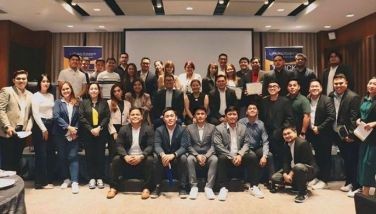Lessons from livable cities

Singapore is acknowledged as one of the best places to live in the world. The city is planned and built to support urban life and lifestyles with great mass transport infrastructure, a balance of built-up areas and open green space, rational zoning for business and industry, and an inclusive housing program that ensures citizens are never far from work or recreation. I should know: I lived there for 12 years.
Singaporean authorities have gotten the process of urban development down to a science, having honed its planning and development process for close to half a century. They are not resting on their laurels but are instead actively seeking to improve its city-building knowledge base and skills by research, and by sharing its experience and expertise with other cities around the world.
They set up a Center for Livable Cities (CLC) six years ago to “distill, create and share knowledge on livable and sustainable cities.†The CLC also co-organizes the biannual World Cities Summit (WCS), a venue for such sharing. The next edition of the well-attended event in Singapore will be held from June 1 to 4, 2014 at the fabulous Marina Bay Sands Singapore. Related events to be held at the same venue, and of interest to city authorities worldwide, will be the Singapore International Water Week and CleanEnviro Summit Singapore.
WCS 2014 is distinctive in its program, which includes the WCS Mayors’ Forum, the Lee Kuan Yew World City Prize Lecture & Forum and WCS Young Leaders, among others. This year’s theme is “Livable and Sustainable: Common Challenges, Shared Solutions,†aiming to help cities “look at the state of urban challenges today and identify principles of shared solutions applicable to cities spanning the range of development, socio-economic and political contexts.â€
I met recently with WCS spokesperson and CLC executive director Khoo Teng Chye, who was in town recently to visit Quezon City and meet with its officials. Current QC Mayor Herbert Bautista had been a regular participant and had struck an active partnership with CLC for the benefit of his city and constituency.
Khoo was accompanied by CLC director Dr. Hee Limin. I was acquainted with both. Khoo had been at the helm of several government bodies including the Public Utilities Board that had been successful in ensuring the precious commodity of water for the island nation. The PUB, the Urban Redevelopment Authority and NParks along with other government agencies have slowly evolved Singapore into a green and blue paradise, blessed with an extensive park system, bio-engineered storm water management and both a vibrant central city core along with well-connected urban satellites and housing estates. Dr. Hee had been one of my professors in Urban Design at the National University of Singapore. She is a leading academic focused on urban planning and development research.
Mr. Khoo informed me that last year the mayor, along with key QC officials, had completed a five-day Urban Management Leaders Program organized by Singapore’s Temasek Foundation (TF) and the CLC. The training program was co-sponsored by the foundation and the Quezon City government. The program has inspired QC’s leaders to conceptualize and launch key projects including sustainable low-income housing, a solid waste-to-energy strategy, the re-development of the QC City Hall into a green building, and establishment of an entertainment boulevard based on the city’s numerous broadcast and performance centers.
The CLC group attended a presentation by QC officials on the status of these projects last April 28. The event included exchanges by the city’s project teams lead by the mayor and Vice Mayor Joy Belmonte, and also Temasek Foundation (TF) officials. The presentation was followed by site visits to successfully implemented projects that included housing and the waste-to-energy project at a landfill, and tours around the city hall complex itself, which is being transformed.
Mr. Khoo outlined the goals of the CLC for urban research on best practices and the target of the World Cities Summit, which he indicated was growing in attendance and is projected to bring in over 117 cities, more than participated in its last outing. He emphasized the participatory nature of the summit, which engenders an environment where “government leaders and private sector experts exchange ideas and responses, as well as form global networks, to more effectively address urban challenges.â€
The challenge is indeed an urgent one for Philippine cities, where today over 60 percent of Filipinos live, or try to. Metro Manila encompasses 16 of those cities, all with shared problems. Several have initiated programs for sustainability and climate change adaptation but more needs to be done. Models for urban development are best sourced from cities close to home, which have had to deal with similar problems in similar climes and with close cultural affinities. Once studied though, and after what is learned is institutionally adapted and assimilated, it still requires political wherewithal, private business cooperation and inclusive civic participation to ensure these urban lessons turn into livable cities.
* * *
Feedback is welcome. Please email the writer at paulo.alcazaren@gmail.com. For more information on the Center for Livable Cities and the World Cities Summit log on to www.clc.gov.sg and www.worldcitiessummit.com.sg.




















